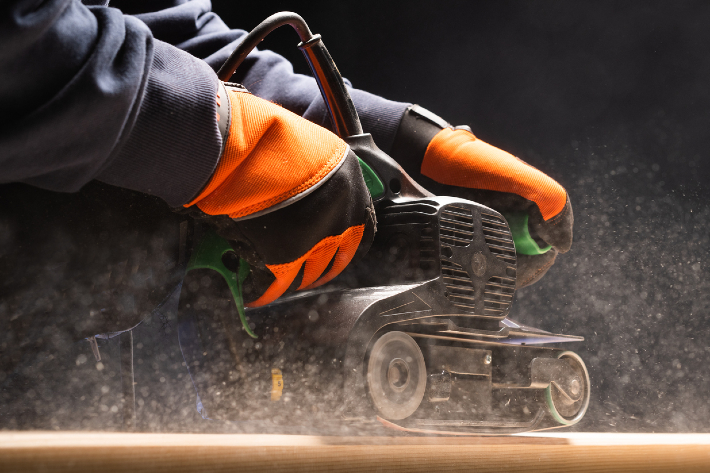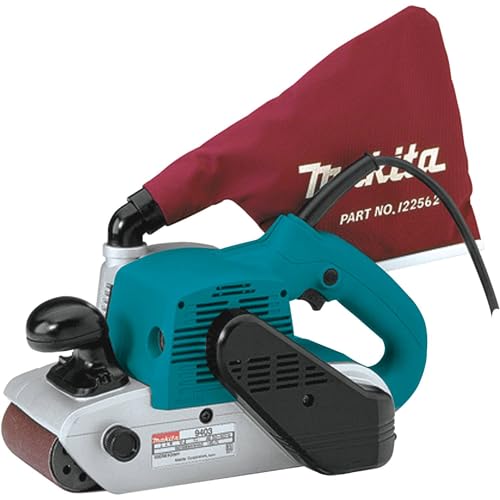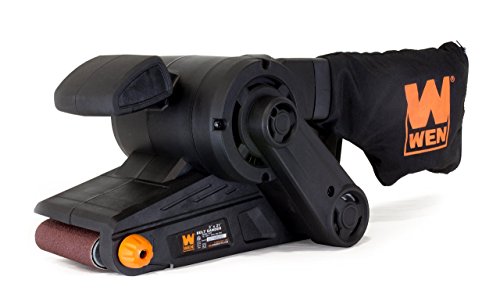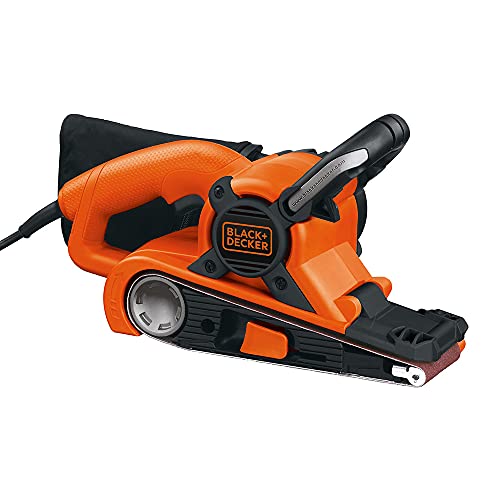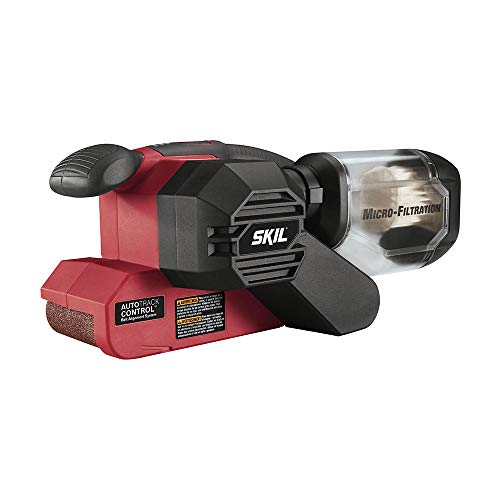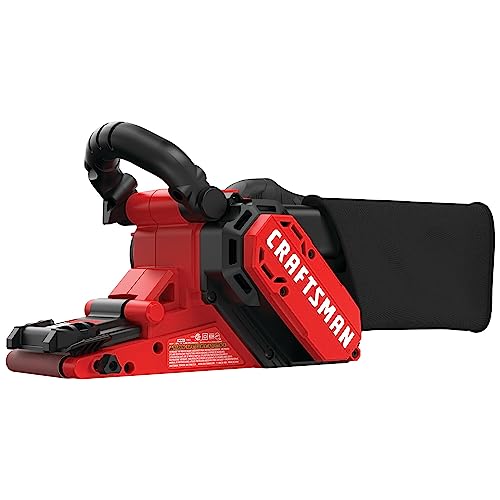- StoreProjects
- Free Plans and Projects
- Furniture Projects
- Jigs And Fixtures Projects
- Shop Projects
- SketchUp Models
- Shop Storage
- Workbenches
- Free Woodworking Downloads From Lee Valley
TechniquesToolsVideos- Premium Streaming Video Site
- Experts Guide to Gluing & Clamping Wood
- Mastering Built-In Furniture
- Simple Live-Edge Slab Table
- CNC – Designed for Woodworkers
- Milling Your Own Lumber
- Advanced Bandsaw Techniques
- I Can Do That! – Simple Woodworking Projects
- Woodwright’s Shop with Roy Underhill
- Tricks of the Trade
BlogOur content is meticulously curated through independent research, testing, reviews, and AI-driven recommendations, all designed to present you with the finest product choices. When you make a purchase through our links, it could result in us earning a commission.The Best Belt Sanders for Smoothing Wood Surfaces
Last updated: 17 Jul 2024
In our review, we examined each belt sander’s power, speed control, ease of use, and overall durability. After thorough research, we concluded that the Makita 9403 Belt Sander is the number one option on the market. Keep reading to see our other picks!
Many woodworkers find it challenging to choose the right belt sander for their projects—and for good reason! A reliable belt sander is essential if you want to achieve smooth, precise finishes on your woodworking pieces. The best belt sanders offer powerful motors, adjustable speeds, and easy-to-change belts, making your sanding tasks more efficient and faster.
- Best Overall: Makita 9403 Belt Sander Shop Now ➔
- Most Affordable: WEN 6321 Belt Sander Shop Now ➔
- Most Ergonomic: BLACK+DECKER Belt Sander Shop Now ➔
- Best for a Home Shop: Skil 7510-01 Belt Sander Shop Now ➔
- Easiest to Use: Craftsman Belt Sander Shop Now ➔
View all ContentsThe Best Belt Sanders
Best Overall
At the top of our list, we have the Makita 9403 Belt Sander. This is a corded sanding device with a robust and efficient 11 amp motor. It’s designed for maximum productivity with a large round front grip, 360° rotating dust bag, and conveniently located power cord. It uses a 4 x 24 inches sanding belt that enables you to sand bigger areas in minimal time. Its speed controlling feature lets it maintain the speed under specific loads and stress. We have placed it first on our list for its powerful motor, low noise output, and efficient performance.
Pros
- Ergonomic design
- Easy to operate
- Very quiet
Cons
- On the expensive side
Most Affordable
WEN is a well-known manufacturer of heavy-duty power tools. Its 6321 Belt Sander is a powerful device designed to deliver excellent performance without being a burden on your budget. The tool is equipped with a 7 amp motor, allowing it to rotate over 13 feet per second. It is a compact and lightweight machine that you’ll find very easy to use. Thanks to its lock-in feature, you don’t need to constantly grip the trigger to get it to sand. And if the belt loses alignment, there is an adjustment knob to line it back.
Pros
- Very fast sanding times
- Compact and lightweight
- Easy belt changing and adjustments
Cons
- The dust collection system could be better
Most Ergonomic
Our next pick is an ergonomic and versatile belt sanding device from BLACK+DECKER. This belt sander is a powerful tool yet handy tool that can take care of most home jobs. It is equipped with a 7 amp motor and angled belt design for versatile usability. The low-profile machine sits flush with any surface, making vertical sanding possible. A good aspect of its design is the retractable hood that enables you to use the machine in various ways. Plus, like the other models on this list, this belt sander also has a dust extraction system in the form of a dust collection bag that keeps your work area and surfaces neat and mess-free.
Pros
- Ergonomic design
- Comfortable grip
- Lighweight, easy to operate
Cons
- Not suitable for heavy-duty jobs
Best for a Home Shop
The Skil 7510-01 Belt Sander is also one of the most affordable power tools currently available on the market. This belt sander incorporates a 6 amp motor with a 3 x 18 inches belt that ensures a satisfactory sanding job. It is suitable for DIYers who love retouching and finishing the woodwork around their house. While it is a fixed-speed sander, the automatic pressure control feature enables it to adjust its speed according to the load. The auto track belt system ensures it always stays on the right track and completes a convincing sanding job.
Pros
- Very powerful motor
- Great dust collection system
- Lightweight and easy to use
Cons
- Cannot adjust its speed
Easiest to Use
If it’s your first time buying a belt sander, you should definitely check out this belt sander from Craftsman. We really like this machine for its lighter weight and convenience. It has an adjustable handle that you can set in three different positions for comfortable handling. The onboard dust bag collects all the extracted material, so there is no dust left behind. Plus, the belt changes are also effortless thanks to the quick, tool-less release. Lastly, the power tool comes with a three-year limited warranty for customer satisfaction.
Pros
- Sturdy and lightweight construction
- Easy to handle
- Very easy to perform belt changes
Cons
- The dust collection bag is quite small
The Best Belt Sander Buying Guide
Belt sanders quickly gained popularity because they can extract a lot of material in a short time. But being popular means the introduction of newer models, each claiming to be better than the other. So, how can you identify the right one for your needs? By using the buyer’s guide we have compiled below!
Stationary vs. Handheld Belt Sander
Belt sanders employ a pair of rollers and a sanding belt to remove the material from various surfaces. Design-wise, they are categorized into two types – stationary and handheld.
- Stationary belt sanders are installed on top of a worktable. They take advantage of the table’s support to provide you with clean and accurate results, like even edges. Since they offer better control, you can use these with wider belts enabling a more powerful dust extraction. However, their fixed position means you have to take the material to the tool, so they only work with limited board sizes.
- Handheld belt sanders, on the other hand, are more compact. Hence, they consume less space for storage and operation and are also highly portable. With these, there is no limit on board size. However, they usually work with thinner belts. Plus, the dust collection of these machines is limited to their hose attachment.
Features to Consider in a Belt Sander
A belt sander is a must-have in any project involving a lot of sanding. Here is a quick overview of some important features that you should consider in a belt sander.
Power source
Belt sanders come in both corded and cordless variations. The stationary ones are all corded models that run off the AC current obtained from a wall socket. Handheld models, on the other hand, can be both corded or cordless.
As with most power tools, you are likely to obtain more power from a corded model. But the tradeoff with these units is limited mobility and tethering to the power supply. Cordless ones offer more freedom of movement. They typically operate on 18-volt lithium-ion rechargeable batteries, but you can also look into getting a more powerful unit with a 20-volt rechargeable battery.Speed
The rotating speed of the belt is another important aspect to be careful about. It is usually measured in feet per minute or fpm. Some manufacturers still use the rotation per minute or rpm to denote the speed of their tool. Many belt sanders operate at just one speed which is usually 1,500 fps. Others support variable speed which ranges from 500 to 1,500 fps. Using these, you can adjust the sanding speed to your desire. But do note that belt sanders with variable speed control are usually more expensive.
Design
The design of the belt sander is an important consideration because it determines the tool’s handling. An ergonomic belt sander ensures good handling and sanding by providing you with a secure and comfortable grip. Look for a device with multiple handling positions and a non-slip handle to ensure comfortable operation. It should not cause you any fatigue, even when you sand a large surface.
People Also Asked
What is a belt sander best for?
Belt sanders can quickly remove a lot of material, that's why they are a good choice for eliminating roughness and preparing the surface for other, less aggressive sanding tools like random orbit sander or finishing sander. You can also use one to refinish your furniture, floor, or level uneven surfaces.
What size belt sander should I get?
Many woodworking experts agree that 3 x 21 inches and 4 x 24 inches sanding belts are the right size for most home shop uses. Such a tool sands a reasonable amount of area without tiring you out. If you use a bigger machine, the higher weight and bulk will most likely fatigue you quickly.
How long does the belt on a belt sander last?
With moderate usage, a sanding belt can easily last for about 12 to 18 months. However, some other factors also impact the belt's life, including the grit of the sandpaper, the material of the belt, and the surface you are sanding.
Article Contributors
Read More About Popular Woodworking Reviews Team HereThe Popular Woodworking Review Team’s product reviews and comprehensive guides are here to help you select the best gear and tools to efficiently complete top-quality woodworking projects.
Popular Woodworking is reader-supported: When you buy through links on our site, we may earn an affiliate commission. Artificial Intelligence (large language models) may have been used in the research and creation of the content.
Questions about product testing or a specific articles should be sent to aimperiapt@gmail.com

